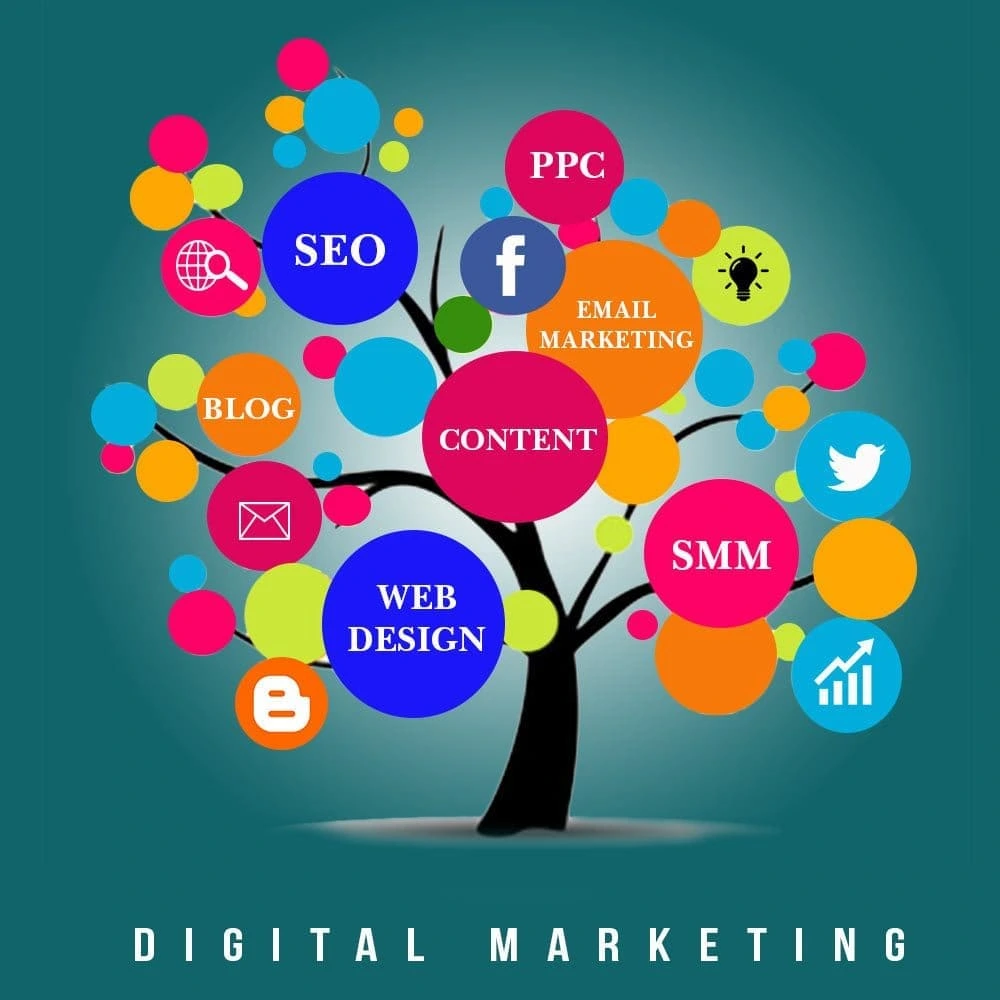The internet business has boomed manifolds, and anyone who thinks that it is going to stop anytime soon is kidding themselves. This very business has given rise to a new phenomenon, albeit it happened a few years back, it has become a very important part in the development of business for a lot of companies and brands. It has helped these brands develop an online presence and reach a wide base of global audience, which has helped them garner more sales and reach than ever before. This has given a lot of companies birth and has given rise to a new competition among different agencies to attract brands attention and get their digital branding work for themselves.
How has digital marketing developed
Digital marketing encompasses all marketing efforts that use an electronic device or the internet. Businesses leverage digital channels such as search engines, social media, email, and other websites to connect with current and prospective customers. In many ways, digital marketing is no different from traditional marketing. In both, smart organizations seek to develop mutually beneficial relationships with prospects, leads, and customers. But digital marketing has replaced most traditional marketing tactics because it’s designed to reach today’s consumers.
Over the years, traditional marketing has had a lot of impact on how brands convey their ideas to the audience, what digital marketing has done is that it has enhanced this impact by reaching to a much larger audience and all of them segregated in various age groups.
For instance, if you are a clothing and apparel brand having products for all the age groups, you want your marketing team to reach all of them. Now, with digital marketing, it is extremely easy nowadays to do that with the reach you gain. Perhaps, some years ago through traditional marketing, you would reach parents via papers, magazines, hoardings etc., via digital marketing, you can market your product to parents as well as the young ones through social media, websites and other sources like gaming portals etc.
Digital marketing is defined by the use of numerous digital tactics and channels to connect with customers where they spend much of their time: online. From the website itself to a business’s online branding assets — digital advertising, email marketing, online brochures, and beyond — there’s a spectrum of tactics that fall under the umbrella of “digital marketing.”
The best digital marketers have a clear picture of how each digital marketing campaign supports their overarching goals. And depending on the goals of their marketing strategy, marketers can support a larger campaign through the free and paid channels at their disposal. Let’s move onto the different types of digital marketing through which branding can be done.
Types of digital marketing
There has been a tremendous growth in what comes under the spectrum of digital marketing that it sometimes becomes difficult to define them all. We have a few that will help you in case you want to learn and develop your own brand and foray into the wide world of digital marketing.
Social Media Marketing: Starting off with the most popular of digital marketing arenas currently, social media marketing is a part of the industry that has been on the upward tangent ever since it was introduced to the market. Social media marketing is a practice that promotes your brand and your content on social media channels to increase brand awareness, drive traffic, and generate leads for your business. The channels you can use in social media marketing include Facebook, Twitter, Instagram, LinkedIn, Snapchat and Pinterest. At first, it was a pain to post differently every time for every channel, it has changed however over time. Now there are apps that help you schedule posts together for different channels.
The essential point to remember when it comes to social media marketing is that your audience on every channel is different, and also how much you post on every channel also changes. LinkedIn is full of professional inputs, while Twitter has a restriction of characters. Facebook and Instagram are photo friendly and can be used much more compared to the rest of the channels.
So how does social media marketing work exactly? The answer is through Pay Per Click (PPC). PPC is a method of driving traffic to your website by paying a publisher every time your ad is clicked. One of the most common types of PPC is Google Ads, which allows you to pay for top slots on Google’s search engine results pages at a price “per click” of the links you place. Other channels where you can use PPC include:
Paid ads on Facebook: Here, users can pay to customize a video, image post, or slideshow, which Facebook will publish to the news feeds of people who match your business’s audience.
Twitter Ads campaigns: Here, users can pay to place a series of posts or profile badges to the news feeds of a specific audience, all dedicated to accomplish a specific goal for your business. This goal can be website traffic, more Twitter followers, tweet engagement, or even app downloads.
Sponsored Messages on LinkedIn: Here, users can pay to send messages directly to specific LinkedIn users based on their industry and background.
Search Engine Optimization: Among the most popular types of digital marketing, search engine optimization (SEO) is the process of optimizing your online content so that a search engine likes to show it as a top result for searches of a certain keyword. When it comes to SEO, there’s you, the search engine, and the searcher. SEO is the magic you have to work on your article in order to make Google very likely to include your post as one of the top results whenever someone searches for that keyword. In the simplest of terms, SEO is the process of optimizing your website to “rank” higher in search engine results pages, thereby increasing the amount of organic (or free) traffic your website receives. There are a number of ways to approach SEO in order to generate qualified traffic to your website. These include:
On-page SEO: This type of SEO focuses on all the content that exists “on the page” when looking at a website. By researching keywords for their search volume and intent (or meaning), you can answer questions for readers and rank higher on the search engine results pages (SERPs) those questions produce.
Off-page SEO: This type of SEO focuses on all the activity that takes place “off the page” when looking to optimize your website. “What activity not on my own website could affect my ranking?” You might ask. The answer is inbound links, also known as backlinks. The number of publishers that link to you, and the relative “authority” of those publishers, affect how highly you rank for the keywords you care about.
Technical SEO: This type of SEO focuses on the backend of your website, and how your pages are coded. Image compression, structured data, and CSS file optimization are all forms of technical SEO that can increase your website’s loading speed, an important ranking factor in the eyes of search engines like Google.
Content Marketing: This term denotes the creation and promotion of content assets for the purpose of generating brand awareness, traffic growth, lead generation, and customers. The channels that can play a part in your content marketing strategy include:
Blog posts: Writing and publishing articles on a company blog helps you demonstrate your industry expertise and generates organic search traffic for your business. This ultimately gives you more opportunities to convert website visitors into leads for your sales team. But content marketing is so much more than just blog posts.
Infographics: Sometimes, readers want you to show, not tell. Infographics are a form of visual content that helps website visitors visualize a concept you want to help them learn.
E-Books and white papers: E-Books, white papers, and similar long-form content helps further educate website visitors. It also allows you to exchange content for a reader’s contact information, generating leads for your company and moving people through the buyer’s journey.
Apart from these three, there are a few other major parts of online marketing which include, Affiliate Marketing, Native Advertising, Marketing Automation, Email Marketing, Online PR, Inbound Marketing and Sponsored Content. If you’re already doing digital marketing, it’s likely that you’re at least reaching some segments of your audience online. No doubt you can think of some areas of your strategy that could use a little improvement, though.

